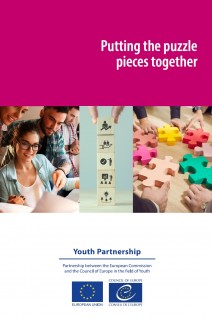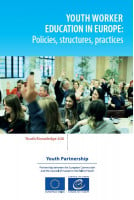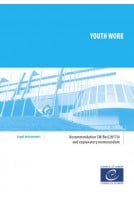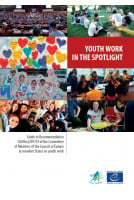Study on models for the recognition of youth workers’ competences in Europe - Final report
In 2022 and 2023, the Council of Europe and the European Commission decided to enhance their co-operation on youth work. The Committee of Ministers of the Council of Europe’s Recommendation CM/Rec(2017)4 on youth work, the 3rd European Youth Work Convention (2020) and the consequent European Union Council Resolution on the European Youth Work Agenda (EYWA) in 2020 were key milestones in this direction. In line with these developments, the EU–Council of Europe Partnership in the field of youth stepped up its activities on youth work and on the implementation of the EYWA, among others, by supporting better recognition of youth work.
The aim of this study was to make recommendations to the two partner institutions on possible scenarios for a common, cross-border and pan-European instrument for the recognition of youth workers’ competences, based on existing practices at national and European levels. As a step towards ensuring the robust implementation of the EYWA, the objective was to make important advances in the recognition of youth work. In this report, two possible web-based models for the recognition of youth workers’ competences are presented, which may be taken into consideration in discussion about this widely debated issue, hopefully contributing to the shaping of future youth policy initiatives.
1. EXECUTIVE SUMMARY 2. CONTEXT AND BACKGROUND 3. SCOPING THE EUROPEAN LANDSCAPE FOR POTENTIAL MODELS FOR RECOGNITION OF COMPETENCES
3.1. Review of country and cross-country models
3.2. Recognition and accreditation models from outside the youth sector
3.3. Pan-European models
4. PROPOSED MODELS FOR THE RECOGNITION OF YOUTH WORKERS’ COMPETENCES
4.1. Model A – Suggested scenario
4.2. Model B – Suggested scenario
4.3. Model A - Governance, hosting, implementation and support structures and bodies
5. BENEFITS OF RECOGNITION
5.1. For youth workers
5.2. For institutions, policy makers and the youth sector
6. STUDY OUTCOMES AND CONCLUSIONS 7. APPENDIX − VISUALISATION OF THE SPECIFICATIONS OF THE TWO MODELS
a. Method of assessment
b. Requirements
c. Source of evidence
d. Competence assessment
e. Support provided








